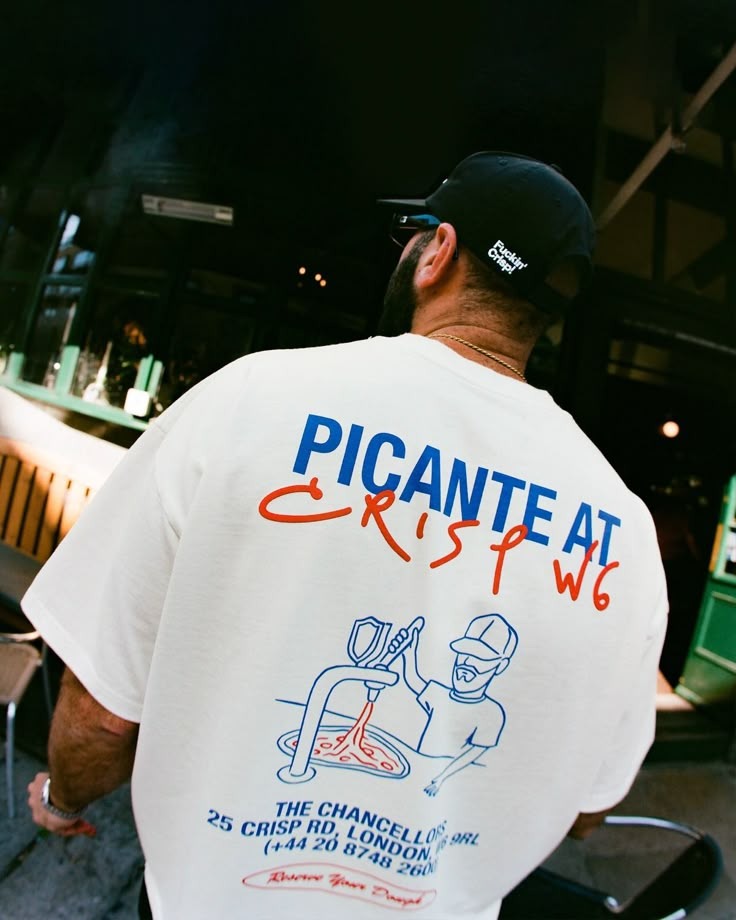T-Shirts: A Cultural Icon and Fashion Staple

T-shirts are more than just casual garments; they are a powerful medium of self-expression, a canvas for art and design, and a cultural icon that has evolved alongside society. Today, t-shirts can be found in every wardrobe—from high fashion runways to everyday streetwear. In this article, we will explore the history, evolution, cultural significance, production process, and future of t-shirts, delving into why they remain a beloved staple in the world of fashion.
History and Evolution
The history of the t-shirt dates back to the early 20th century. Originally designed as an undergarment, the t-shirt was created for comfort and practicality. During the 1910s and 1920s, it became popular among military personnel due to its lightweight and breathable fabric, which made it ideal for long hours of duty. The simple design, featuring short sleeves and a round neckline, was both functional and unpretentious.
After World War II, t-shirts began to emerge as a standalone garment rather than just underwear. The iconic image of Marlon Brando wearing a plain white t-shirt in the 1951 film “A Streetcar Named Desire” helped to popularize the t-shirt as outerwear. By the 1960s, the t-shirt had become synonymous with rebellion and counterculture, as musicians, artists, and political activists used it as a medium to communicate their ideas. The rise of screen printing in the 1960s enabled creative expression on t-shirts, turning them into wearable art. Today, t-shirts have evolved into a global phenomenon, with countless styles, colors, and designs available to suit every taste and occasion.
Cultural Significance
One of the most fascinating aspects of the t-shirt is its cultural impact. Over the decades, t-shirts have been used as a platform for social commentary, political statements, and artistic expression. From band logos to witty slogans, the designs on t-shirts tell stories about the wearers and reflect the cultural and political climate of the times.
In the 1970s and 1980s, t-shirts became a medium for protest and activism, often bearing messages of peace, equality, and social justice. More recently, t-shirts have been at the forefront of movements advocating for environmental awareness, gender equality, and political change. Their versatility and accessibility have made t-shirts an ideal canvas for both amateur and professional designers, bridging the gap between high art and everyday wear.
Moreover, t-shirts have also made a significant impact in the realm of branding and marketing. Companies, sports teams, and non-profit organizations frequently use t-shirts as promotional items to increase brand visibility and communicate their values. In this way, t-shirts serve as a form of mobile advertising, transforming every wearer into a walking billboard. Whether it’s a famous logo or a clever slogan, the t-shirt continues to be a powerful tool for communication in today’s visually driven society.
Design and Innovation
The evolution of t-shirt design is a testament to its adaptability. Modern t-shirts come in a variety of cuts, colors, and fabrics, catering to diverse consumer needs and tastes. The basic t-shirt has been reimagined in numerous ways—from the classic crew neck and V-neck styles to more experimental designs that incorporate unique sleeve shapes, asymmetrical cuts, and innovative materials.
Technological advancements have revolutionized the production of t-shirts. Digital printing, for example, has allowed for highly detailed and intricate designs that were previously impossible with traditional screen printing methods. This technology has not only enhanced the quality and durability of prints but has also reduced production times, making it easier for independent designers and small businesses to create and distribute custom t-shirts.
Sustainable fashion is another significant trend impacting t-shirt production. As consumers become increasingly environmentally conscious, many brands are turning to organic cotton, recycled fabrics, and eco-friendly dyes. Sustainable practices in the manufacturing process—such as reducing water usage and minimizing waste—are now at the forefront of many companies’ initiatives. This shift towards eco-conscious production reflects a broader movement within the fashion industry to reduce environmental impact while still delivering stylish, high-quality products.
The Role of T-Shirts in Pop Culture
T-shirts have firmly established themselves as an integral part of pop culture. They are featured prominently in movies, music, and art, often symbolizing the spirit of a particular era or movement. Iconic images like Che Guevara’s portrait, the Rolling Stones’ logo, and the “I ♥ NY” design have become cultural symbols that resonate far beyond the realm of fashion.
Music, in particular, has had a profound influence on t-shirt culture. Fans around the world proudly wear band t-shirts as a way to show their loyalty and connect with others who share their passion. Concert t-shirts, often featuring tour dates and exclusive artwork, are cherished collectibles that capture the energy and excitement of live performances. Additionally, t-shirts have been used to commemorate significant events and milestones, serving as mementos that evoke memories and emotions.
The influence of celebrities and social media cannot be understated in the modern t-shirt narrative. Influencers, actors, and musicians often collaborate with fashion brands to create limited-edition t-shirts that quickly become coveted items. Social media platforms allow fans to share photos and reviews, further amplifying the reach and impact of these designs. This digital interconnectedness has helped to drive trends and shape consumer preferences in ways that were unimaginable just a few decades ago.
T-Shirts as a Form of Self-Expression
At its core, the t-shirt is a form of self-expression. It offers a blank canvas that enables individuals to project their personalities, beliefs, and interests. Whether it’s through a clever slogan, an artistic graphic, or a minimalist design, t-shirts allow people to communicate who they are without saying a word.
The democratization of fashion has been significantly influenced by the t-shirt. With its affordability and versatility, the t-shirt empowers people from all walks of life to express themselves creatively. From statement pieces that challenge societal norms to subtle designs that reflect personal interests, the t-shirt is a medium through which individuality is celebrated.
Furthermore, the customization of t-shirts has given rise to a vibrant subculture of DIY fashion. Many consumers enjoy designing and printing their own t-shirts as a way to create one-of-a-kind pieces that truly reflect their identity. This hands-on approach to fashion not only fosters creativity but also nurtures a sense of community among those who share a passion for personalized style.
The Business of T-Shirts
The t-shirt industry is a multi-billion dollar market that spans the globe. From large multinational corporations to small independent designers, the production and sale of t-shirts is a thriving business. Online platforms and social media have revolutionized the way t-shirts are marketed and sold, making it easier than ever for entrepreneurs to reach a global audience.
E-commerce has played a pivotal role in the growth of the t-shirt market. With just a few clicks, customers can browse through countless designs, read reviews, and purchase t-shirts from the comfort of their own homes. This convenience, combined with the wide variety of styles available, has fueled the popularity of t-shirts as both everyday wear and collector’s items.
Many brands have successfully leveraged the power of limited-edition releases and collaborations to create buzz and drive sales. These special collections often sell out quickly, as consumers rush to own a piece of fashion history. Additionally, the rise of print-on-demand services has lowered the barriers to entry for new designers, allowing for a more diverse range of voices and styles in the market.
Challenges and Opportunities in the T-Shirt Industry
Despite its popularity, the t-shirt industry faces several challenges. Environmental concerns, for instance, are prompting both consumers and manufacturers to rethink traditional production methods. The demand for sustainable materials and ethical labor practices is growing, and companies that fail to adapt may find themselves at a competitive disadvantage.
Counterfeit products and intellectual property issues also pose significant challenges. As t-shirts often feature popular designs and logos, unauthorized reproductions can dilute brand value and hurt revenue. Many companies are now investing in better quality control and legal measures to protect their designs and trademarks.
However, these challenges also present opportunities for innovation and growth. Brands that prioritize sustainability and ethical practices are not only meeting consumer demand but are also setting new industry standards. Technological advancements in printing and fabric production continue to open up new possibilities for creative expression and customization. As consumer preferences evolve, the t-shirt industry is well-positioned to adapt and thrive by embracing change and innovation.
The Future of T-Shirts
Looking ahead, the future of t-shirts is likely to be shaped by ongoing technological and cultural shifts. With advancements in wearable technology, we might soon see t-shirts that incorporate smart fabrics and interactive designs. Imagine a t-shirt that changes color based on your mood or displays digital messages—such innovations could redefine what it means to wear a t-shirt.
Sustainability will remain a key focus for the industry, driving the adoption of eco-friendly materials and production processes. Consumers are increasingly aware of the environmental impact of their purchases, and brands that can deliver stylish, sustainable options will have a distinct advantage.
Moreover, the integration of augmented reality (AR) and virtual reality (VR) in fashion could offer entirely new shopping experiences. Virtual try-ons and digital fashion shows are just the beginning of how technology might transform the way we interact with t-shirts and other garments.
Conclusion
From its humble beginnings as an undergarment to its current status as a global fashion icon, the t-shirt has undergone a remarkable evolution. It is more than just a piece of clothing—it is a form of art, a medium for self-expression, and a powerful tool for communication. T-shirts capture the spirit of our times, reflecting our cultural shifts, technological advancements, and evolving attitudes toward fashion and identity.
As we look to the future, the t-shirt will undoubtedly continue to adapt, innovate, and inspire. Whether you wear a t-shirt to make a statement, to show your support for a cause, or simply for comfort and style, you are part of a tradition that spans generations and transcends boundaries. In every thread and every print lies a story—your story. Embrace it, express it, and let your t-shirt be a testament to the unique individual you are.
